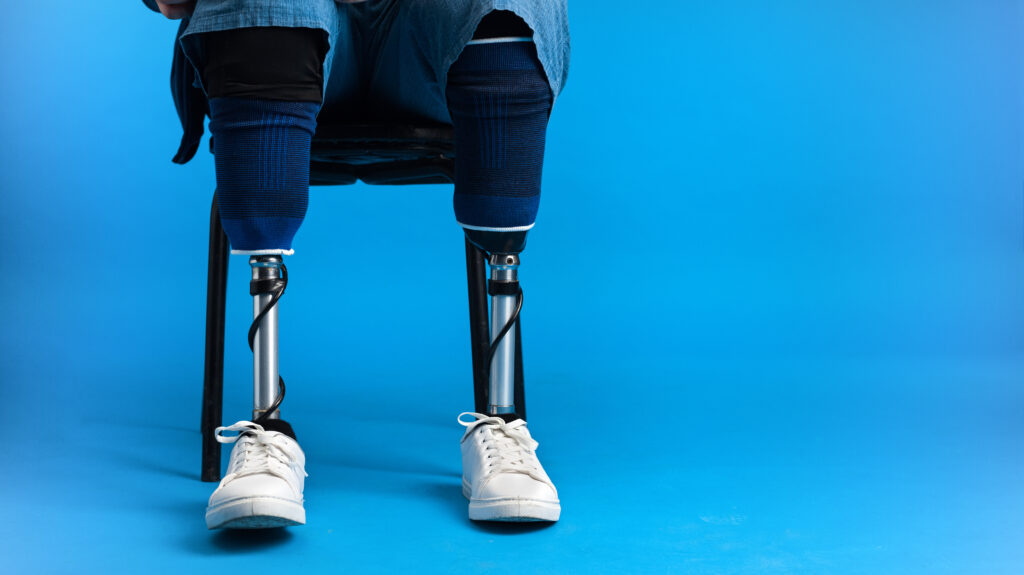Knee replacement surgery has come a long way, offering patients relief from chronic pain and improved mobility. However, not all knee replacement surgeries are the same. The two most common approaches are conventional knee replacement surgery and robotic full knee replacement surgery. While both aim to restore knee function, they differ significantly in terms of alignment, balance, and component positioning. In this blog, we’ll explore these differences in detail and explain why a robotic full knee replacement might be the better choice for many patients.
What Is Robotic Full Knee Replacement Surgery?
A robotic full knee replacement is an advanced surgical procedure that uses robotic-assisted technology to replace a damaged or diseased knee joint with an artificial implant. Unlike conventional surgery, which relies on manual techniques and jigs, this procedure leverages precise robotic systems to ensure optimal alignment, balance, and component positioning. The result is a more natural-feeling knee, faster recovery, and long-lasting results.
Key Differences Between Conventional and Robotic Full Knee Replacement
Let’s break down the differences between conventional and robotic full knee replacement surgery in terms of alignment, balance, and component positioning.
1. Alignment in Robotic Full Knee Replacement vs. Conventional Surgery
- Precision in Bone Cuts: In conventional knee surgery, alignment is achieved using jigs that guide bone cuts. However, robotic full knee replacement is a jig-less procedure, ensuring more precise cuts without inserting metal instruments into the bone.
- Advanced Imaging Techniques: In conventional surgery, X-rays provide a limited view of the knee joint, while robotic full knee replacement uses long-scanogram imaging from hip to ankle, offering a complete view of leg alignment.
- Pre-Surgical Planning: Robotic full knee replacement registers anatomical landmarks such as the hip center, knee center, and ankle center, ensuring perfect alignment before making any cuts.
2. Balance in Robotic Full Knee Replacement vs. Conventional Surgery
- Quantified Ligament Tension: Conventional knee surgery depends on the surgeon’s experience to balance the knee manually. In robotic full knee replacement, ligament tension is numerically quantified before placing the prosthetic components.
- Consistent Stability: Robotic full knee replacement ensures equal ligamentous tension on both sides of the knee throughout its range of motion, resulting in a more stable knee post-surgery.
- Custom Soft Tissue Adjustments: The robotic system provides real-time feedback, allowing surgeons to make precise soft tissue releases to achieve optimal balance.
3. Component Positioning in Robotic Full Knee Replacement vs. Conventional Surgery
- Accuracy and Precision: In conventional surgery, component positioning is done manually using cutting blocks. In robotic full knee replacement, a robotic-assisted arm ensures accuracy up to 0.5 degrees, providing a perfect fit for the prosthetic components.
- Enhanced Range of Motion: Robotic full knee replacement allows for adjustments in flexion, rotation, and alignment, ensuring a better range of motion post-surgery.
- Minimal Soft Tissue Damage: Since robotic full knee replacement involves less tissue dissection, it results in less postoperative pain and a faster recovery for patients in India.
4. Advantages of Robotic Full Knee Replacement for Indian Patients
- Higher Success Rate: Robotic full knee replacement provides better outcomes in terms of stability, durability, and long-term performance compared to conventional knee replacement.
- Reduced Post-Surgery Pain: With minimal soft tissue disruption, patients experience less pain and inflammation after surgery.
- Faster Recovery: Patients undergoing robotic full knee replacement generally return to daily activities sooner than those who undergo conventional surgery.
- Longer-Lasting Implants: The use of high-flex implants and highly cross-linked polyethylene inserts in robotic full knee replacement ensures greater longevity and durability of the knee joint.

CONSULT DR. VIDYASAGAR HOSPITAL TODAY FOR BEST ROBOTIC KNEE REPLACEMENT SURGERY
Why Robotic Knee Replacement Is Better ?
The robotic knee replacement procedure offers several advantages over conventional surgery:
- High Accuracy and Precision: Numerical data ensures optimal alignment, balance, and component positioning.
• Faster Recovery: Minimally invasive techniques and reduced soft tissue damage lead to quicker healing.
• Long-Lasting Results: Premium implants like Oxinium and highly cross-linked polyethylene inserts ensure durability and longevity.
• Patient Satisfaction: A stable, well-balanced knee with a natural range of motion improves overall outcomes.
About Dr. Vidyasagar Hospital in Kadapa, Andhra Pradesh
If you’re considering a robotic full knee replacement, choosing the right hospital and surgeon is crucial for a successful outcome. Dr. Vidyasagar Hospital in Kadapa, Andhra Pradesh, is a leading healthcare facility specializing in advanced orthopedic surgeries. With a team of highly skilled surgeons and state-of-the-art infrastructure, the hospital provides world-class care to patients from across India.
Why Choose Dr. Vidyasagar Hospital?
- Experienced Surgeons: The hospital boasts a team of experienced orthopedic surgeons who specialize in robotic full knee replacement.
- Advanced Technology: Equipped with the latest robotic systems, the hospital ensures precise diagnosis and effective treatment.
- Comprehensive Care: From pre-surgery evaluation to post-operative rehabilitation, the hospital offers end-to-end care.
- Affordable Treatment: Dr. Vidyasagar Hospital is committed to providing high-quality orthopedic surgeries at affordable prices.
Whether you’re dealing with arthritis, a knee injury, or any other condition, Dr. Vidyasagar Hospital is your trusted partner for a successful robotic full knee replacement.
The Future of Knee Replacement Surgery
The field of knee replacement surgery continues to evolve, with advancements in technology and techniques improving outcomes for patients. Innovations like robotic-assisted surgery, personalized implants, and minimally invasive procedures are making robotic full knee replacement safer and more effective than ever before.
For more information on knee replacement surgery and recovery, check out this comprehensive guide by the American Academy of Orthopaedic Surgeons.
Conclusion
When it comes to knee replacement surgery, the choice between conventional and robotic full knee replacement can significantly impact your outcomes. While conventional surgery relies on manual techniques and jigs, robotic knee replacement offers unparalleled precision, faster recovery, and long-lasting results.
If you’re in Kadapa or nearby regions, Dr. Vidyasagar Hospital offers exceptional care and expertise in robotic full knee replacement. With their team of skilled surgeons, advanced robotic technology, and premium implants, you can trust them to guide you through every step of your journey to recovery.
Don’t let knee pain hold you back—take the first step toward a pain-free life by consulting the experts at Dr. Vidyasagar Hospital today!



Recent Comments